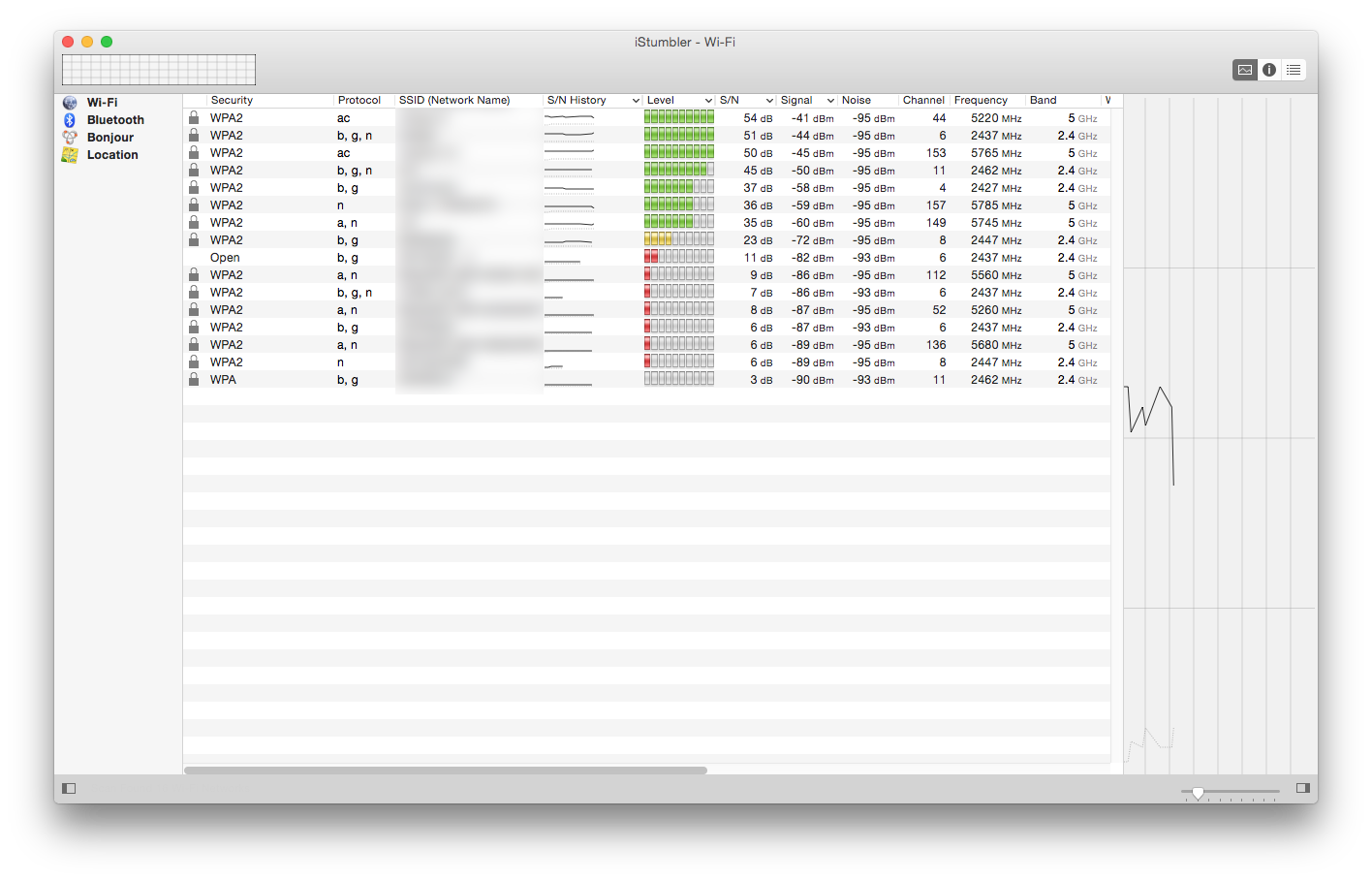| Version 3 (modified by chunter, 9 years ago) (diff) |
|---|
Best Practices when using the Design
Mitigating the Effects of Distant Interferers
One of the key challenges in running over-the-air experiments is accounting for uncontrolled external interference. While there is no single method for keeping unintended interference from polluting research results, there are a number of techniques that help mitigate harmful effects.
Change your Center Frequency
The simplest solution to avoiding interference is to steer away from it to a different part of the spectrum. The MAX2829 transceiver can be tuned to a variety of different center frequencies in the 2.4GHz and 5GHz bands. Before constructing your over-the-air experiment, it is a good idea to scan for Wi-Fi networks around your setup. There are many freely available tools for determining which channels are being used and how powerful the networks using those channels.

|
| Example Wi-Fi Channel Scan |
The above figure shows an example of what you might see after this scan. Given the occupied channels and their relative powers, we can see that 2.4GHz Channel 1 might be a good selection for a channel to run an experiment in.
Make your receivers "intentionally deaf" to very weak signals
Before running an experiment, you should consider what would happen if your design is exposed to weak, but frequent, interference. The 802.11 Rx PHY can only process one packet in any given instant in time. If the PHY starts attempting to decode weak interference, it may be unable to decode your own stronger traffic if it occurs immediately during and after the interference event. Instead, it may make sense to use the "Minimum Packet Detection Energy" feature of the design (characterized here). This parameter lets you prevent the PHY from beginning to start processing a packet unless it is sufficient strong to meet a power requirement that you specify.
To provide a concrete example of where this function can be useful, consider the DCF with Multiple Flows Application Note. This experiment was to show the interaction of DCF behaviors on a few nodes in a very small tabletop topology. In this experiment, the Tx power was intentionally lowered to a minimum value (-10dBm), resulting in received powers between -70 dBm and -75 dBm?.
Pitfalls:
Using the IBSS project as a Monitor and Packet injector
Attachments (1)
- channel_scan.png (208.2 KB) - added by chunter 9 years ago.
Download all attachments as: .zip